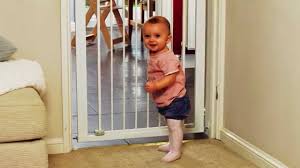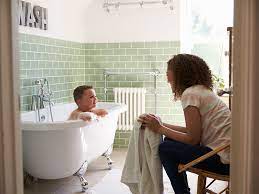Recent Comments
No comments to show.
Posted by Danni Guerreiro in Uncategorized on November 1st, 2022
Yes! They certainly do. Manufacturers and leading safety groups recommend that child restraints over 10 years old should NOT be used.
All seats will have a date of manufacture sticker/ stamp and imprinted “dials” to advise the manufacture date. If you are unsure how to find this we can help. If you have purchased your seat brand new, and have proof of purchase, many manufacturers will now use the date of purchase rather than date of manufacture to calculate the 10 year lifespan (see individual manufacturers websites for more information).
Child restraints are safety devices just like life jackets, helmets and air bags. They need to be in optimal condition to offer the best safety in the event of an accident. Accidents happen, and 100% of the time you can’t plan when. Over time, materials wear and degrade or the seat/components can get damaged with use. Our Australian Safety Standards also get updated periodically to ensure that testing and development of child restraints keeps up with advances in best practice recommendations, design and manufacture processes leading to the safest seating options for your children.
Did you know it is not recommended by manufacturers and leading safety bodies (as well as Safety Seats!) to use child restraints that are over 10yrs old?
All seats will have a date of manufacture sticker/ stamp and imprinted “dials” to advise the manufacture date. If you are unsure how to find this, send us a message! If you have purchased your seat brand new, and have proof of purchase, many manufacturers will now use the date of purchase rather than date of manufacture to calculate the 10 year lifespan (see individual manufacturers websites for more information).
Child restraints are safety devices that need to be in optimal condition to offer the best safety in the event of an accident. Over time, materials wear and degrade or the seat/ components can get damaged with use. Our Australian Safety Standards also get updated periodically to ensure that testing and development of child restraints keeps up with advances in best practice recommendations, design and manufacture processses leading to the safest seating options for your children.


Posted by Danni Guerreiro in Uncategorized on November 1st, 2022
Although we are heading into the summer, we still have very cool mornings and evenings from time to time. This is just a reminder that jackets, jumpers, sleeping bags etc are not safe for your child to wear while they are in their carseat or capsule. Children should only have a thin layer of clothing on before being strapped in firmly, then lay their jacket or a blanket over the top. All of the bulk of the winter gear can give the false illusion that the harness is firm.
In an accident, the fabrics and fillings compress, leaving your child at risk of excessive forward excursion or even complete ejection from the seat. It’s also quite uncomfortable to have all of that bulk bunched up under the straps. And for little ones still sleeping in the car, a hood behind the neck will push the head forward and cause chin-to-chest head flop which can lead to positional asphyxiation.
*N.B. This news clip is from America and their seats, standards and laws are very different to Australia. Please focus on the crash test footage not the journalism ![]()
Posted by Danni Guerreiro in Babies 0-6 months, Uncategorized on November 1st, 2022
While hearing those words in relation to your baby may sound a little scary, hip dysplasia is in fact a very common occurrence in babies. And, thankfully, its easily corrected by wearing a hip brace for a prescribed amount of time.
There are several different types of brace that might be used and each provide their own set of potential complications in relation to children and their carseats.

The main issues relating to children in hip braces are:
1. They are quite wide and their shape prevents infants from sitting in their restraints properly.
2. The shape of the brace causes the child to have an unnatural void beneath their bottom.
Sometimes the use of towels rolled up and placed underneath the child’s bum and knees to provide additional support is recommended by the child’s occupational therapist or Dr so that the infant is supported sufficiently and can be restrained safely in their child restraint.
We do not recommend attempting to set up the towels yourself – please ensure you are guided by your child’s occupational therapist or health care professional.
With certain types of braces, you may need to reach out to the child restraint manufacturer and see if they have a longer crotch buckle available for your carseat. Always contact the manufacturer direct rather than using aftermarket accessories or items for sale online as many are not safe and can have a major impact on the safety of your child restraint.
It’s important to note that not all child restraints will work with a hip brace ie. narrow restraints may put undesired pressure on the child’s knees which could potentially affect the healing process and cause the child to be uncomfortable and unhappy in the car.
Ideally a wide restraint rather than a baby capsule is the desired option as it will allow for the child to fit safely and comfortably.
Here are a few carseats to consider for your child with a hip brace:
InfaSecure Luxi 0-8 range.
Britax Millenia or platinum 0-4 or Britax Maxi Guard.
Joie Itravel 0-4
Nuna Rava 0-4
This list is by no means exhaustive – there may be other options more suitable to your needs. Speak to your health care provider who may also be able to recommend a suitable restraint for your child.
For more information please visit https://www.healthyhipsaustralia.org.au/carseat-options-hip-dysplasia-treatment/
Posted by Danni Guerreiro in Uncategorized on February 14th, 2022
Many new parents are surprised to learn that the most common place for babies and infants to be injured is in and around the home.
Babies can suffer serious injuries, illness and even death because they don’t know how to identify or understand dangerous situations, and they don’t have the physical skills needed to quickly get out of danger. As a parent, it’s recommended that you get down on your hands and knees and conduct—from your baby’s perspective—a thorough inspection of your home for hazards, before your child is old enough to experience these hazards themselves. Crawling around on your hands and knees may seem OTT but you may be surprised but what potentially dangerous items are within a baby’s reach.
Falls
Children can suffer injuries after falling from furniture and play equipment, through windows or down stairs. Eliminate access to any item of furniture or equipment, window or staircase using gates, barriers, locks or moving items to another locked room for a while.
Choking
Babies and toddlers often place things in their mouths. Small objects, such as broken pieces of toys, pieces of fabric, coins, button batteries, nuts and lollies, can easily lodge in their throat and block their airway. Using a robot vaccum can be used daily to minimise the time you spend cleaning and will get under all the furniture for you picking up any small items.

Strangulation
Children can become tangled in ribbons, ties, or blind and curtain cords. These can quickly wrap around their throat and strangle them. Ensure that all cords, ties and cords are secured away from the reach of baby.
Suffocation
When babies have their faces trapped against bedding, fabric, pillows, mattresses or soft toys, they may not be able to roll away and can quickly suffocate. Never use pillows, folded quilts, bumpers or toys in a baby bed. Do not add extra mattresses, foam or cushioning to baby beds that was not provided by the manufacturer.
Crushing
Babies and toddlers climbing onto or holding unstable furniture can quickly pull it down on themselves. They can also crush their fingers in moving parts on items such as doors, drawers, prams, strollers, high chairs, portable cots and playpens. Always ensure that furniture is bolted to the wall and any heavy items are barricaded off
Trapping
Gaps in equipment that are 30 mm to 50 mm wide can trap your baby’s legs or arms. Gaps between 95 mm and 230 mm can trap your baby’s head by allowing their body, but not their head, to fit through the space. This can strangle them.
Cuts
Sharp edges on toys, equipment and benches can cause cuts. Any folding frames and moving parts need a safe space between moving parts (at least 5 mm to 12 mm), so they don’t act like scissors on your children’s fingertips.
Drowning
Babies and toddlers can quickly drown in even very small amounts of water. Always empty buckets, nappy buckets, basins and bowls of water after use, or place them out of reach. Install four sided fencing, and self-closing, self-latching gates around pools, as required by law. Never leave your baby or toddler alone in a bath, bath aid, paddle pool or basin of water—even for the shortest time. Remember, aquatic toys, flotation aids and bath aids are not safety devices. There is no substitute for good, close (at arm’s length), competent adult supervision around water. You may also want to consider taking a course on water safety so you are better prepared in the event of an emergency.

Poisoning
Burns, scalds and electrocution
Never let your children play in the kitchen while you’re preparing meals. Burns and scalds have occurred after children have pulled on electrical appliance cords for things like cookers, kettles or fry pans. You should also install and maintain smoke alarms, place a fire blanket and extinguisher in the kitchen, develop a home fire escape plan and practise it regularly.
Recommendations:
Only choose products that are for your baby’s age and size;
Always, always read and follow the manufacturer’s instructions for assembly and use;
Stay within sight and reach of babies and toddlers—don’t leave them in the care of other children;
Regularly check products to ensure latches, locks, brakes and frames work—make sure there are no torn fabrics or accessible small parts that may cause choking, or gaps that may trap your baby or allow your baby to fall through;
If you find a baby product that is damaged, seek out an approved repairer recommended by the manufacturer – never attempt to repair your baby products yourself;
Dispose of damaged children’s products that can’t be repaired;
Keep a well-stocked first aid kit in your home and take a first aid course before your baby arrives.